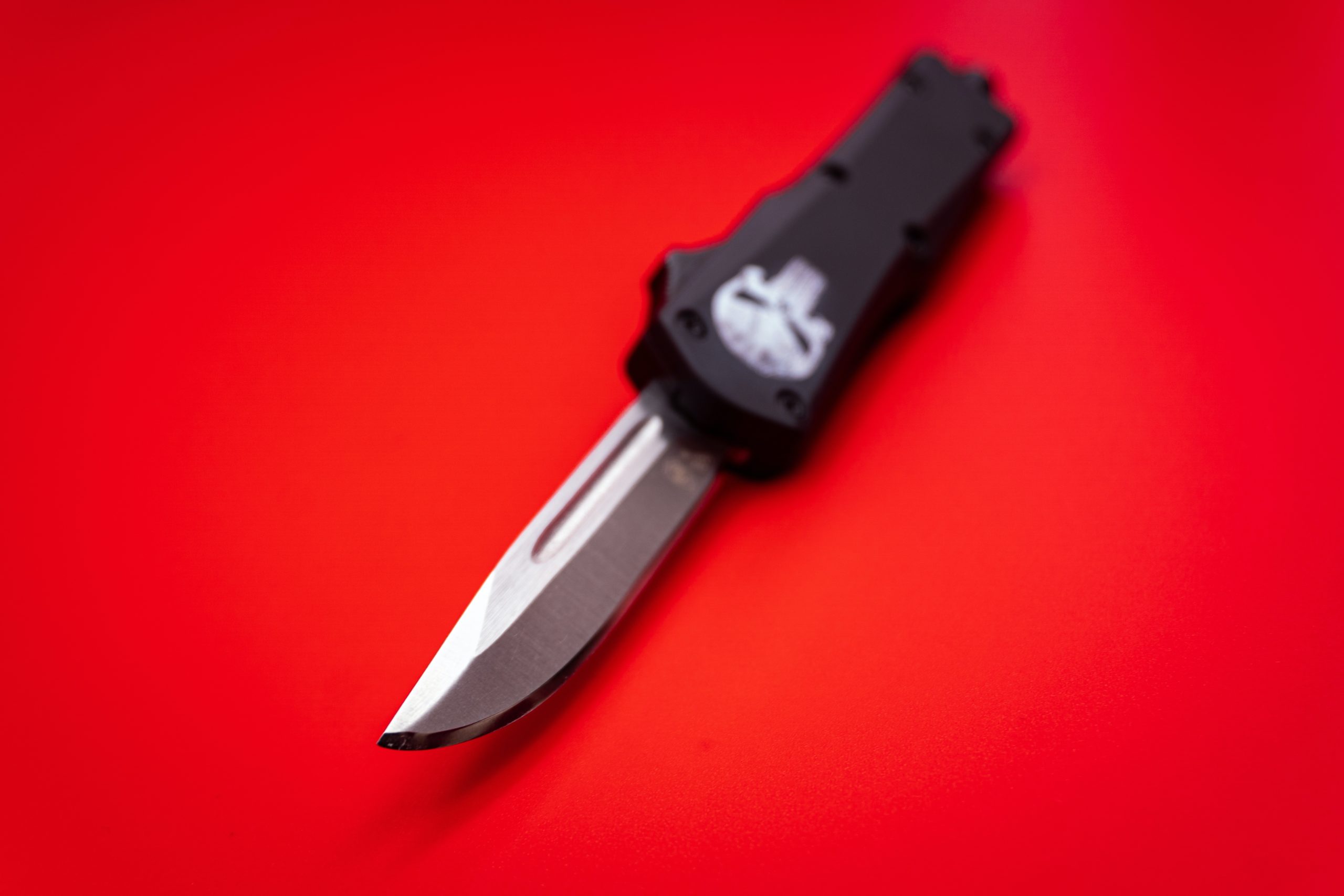Please read my disclosure policy to understand how I work with companies and individuals. Linking to a specific site does not imply endorsement of all of their services or content.
 Image Source: Unsplash
Image Source: Unsplash
In the realm of cutting tools, automatic knives stand as a testament to both engineering innovation and utility. Often referred to as switchblades, these folding knives are renowned for their rapid blade deployment at the mere push of a button or flick of a lever. With this incredible speed and versatility, it’s no wonder they have found a place in various spheres of life, from outdoor enthusiasts and tactical professionals to those seeking efficient tools for everyday tasks.
Understanding Automatic Knives
Before we dive deeper into the world of automatic knives, it’s crucial to grasp the essence of these remarkable instruments. At their core, automatic knives are folding blades that boast a spring-loaded mechanism, enabling them to transform from a compact, easily carried form into a fully functional cutting tool within the blink of an eye. This rapid deployment sets them apart from traditional folding knives, making them an attractive choice for those who value speed and efficiency in their cutting tasks.
The applications of automatic knives are diverse, ranging from outdoor adventures, survival situations, and self-defense scenarios to more mundane but equally essential tasks like opening packages or slicing fruits. Their versatility is one of their most prominent features, making them a valuable addition to anyone’s toolkit.
Legal Considerations
As with many tools, the legal status of automatic knives varies significantly depending on your location. In some areas, they are readily available for various purposes, while in others, they may be subject to strict regulations or outright bans. Before acquiring an automatic knife, always research and familiarize yourself with the local laws governing their possession and use. Ignorance of the law is never a valid excuse, and staying informed is the first step toward responsible ownership.
Safety First: Blade Handling
Central to the responsible use of automatic knives is the unwavering commitment to safety. Whether you’re an experienced user or just starting, understanding and practicing proper blade handling techniques is paramount. Safety begins with the fundamentals—keeping your fingers clear of the blade’s path during both deployment and closure. Familiarizing yourself with the knife’s mechanism is essential to avoid accidents.
The speed at which automatic knives deploy can catch beginners off guard, but with practice and mindfulness, you can develop a secure grip and the confidence to operate them safely.
Choosing the Right Knife
Selecting the right automatic knife can significantly impact both your performance and safety. Consider various factors when making your choice, including the type of blade, handle material, size, and intended use. For instance, a tanto-style blade may be better suited for piercing tasks, while a drop-point blade might excel at slicing.
The handle material should provide a secure grip, and the knife’s size should match your hand comfortably. Matching the knife’s features to your needs enhances not only your performance but also your safety.
Maintenance and Care
Like any precision tool, an automatic knife benefits from regular maintenance and care. Keeping your knife clean, lubricating moving parts, and ensuring the blade remains sharp are essential practices. A well-maintained automatic knife is less likely to malfunction, ensuring that it performs safely and reliably when you need it most.
Training and Practice
Proficiency in handling automatic knives is achieved through practice and training. Seek guidance from experienced users or, even better, enroll in classes specifically designed to teach safe and effective knife-handling techniques. Consistent practice not only enhances your skill but also reinforces safety as an integral part of your knife-wielding journey.
Safety Gear
In the pursuit of safety, it’s vital not to overlook the value of proper safety gear. When using automatic knives, consider wearing gloves and eye protection. Gloves offer an extra layer of protection for your hands, and eye protection prevents any potential debris or splinters from causing harm to your eyes. These seemingly small precautions can make a substantial difference in your safety while working with powerful tools.
Common Misconceptions
Automatic knives often suffer from misconceptions perpetuated by their portrayal in media and popular culture. Contrary to these myths, when used responsibly, automatic knives have an impressive safety record. They are no more dangerous than any other knife when in the hands of a responsible user. Clearing up these misconceptions is essential in fostering a more accurate understanding of these tools.
Safety Tips for Everyday Use
Whether you employ an automatic knife for daily tasks or specific activities, it’s essential to follow safety guidelines. This includes safe carrying practices and proper storage when the knife is not in use. By maintaining a disciplined approach to handling your automatic knife, you minimize the potential for accidents.
Benefits of Automatic Knives
The advantages of automatic knives extend far beyond their rapid deployment. They excel in situations where speed is of the essence. For instance, in emergencies, having a tool that can swiftly cut seatbelts or break glass can be a lifesaver. Additionally, their versatility ensures they perform admirably in various scenarios, making them a popular choice among those who require a reliable tool.
Safety in Emergency Situations
One of the standout features of automatic knives is their utility in emergency situations. When every second counts, the ability to deploy a sharp blade rapidly can make all the difference. However, always remember that safety comes first. Proper training and preparedness should accompany the use of an automatic knife in critical moments.
Maintaining a Clean Record
Ensuring a clean record with your automatic knife involves more than just responsible usage. It also entails compliance with local laws and staying informed about any changes in regulations. Responsible ownership and usage not only protect you from legal troubles but also contribute to a positive image of the knife community.
In conclusion, mastering the art of using automatic knives is a balance between embracing their speed and upholding safety standards. These remarkable tools offer unparalleled efficiency, but wielding them demands knowledge, training, and responsible ownership. By prioritizing safety and adhering to the guidelines outlined in this article, you can harness the benefits of automatic knives while minimizing risks, all while relying on trusted brands like Out the Front Knives for high-quality automatic knives.


